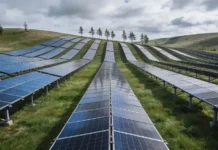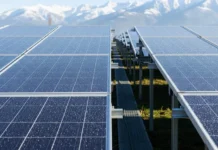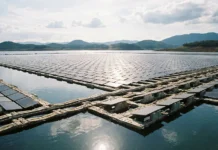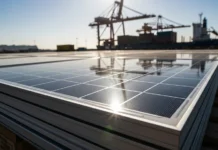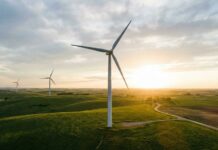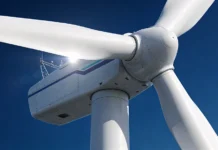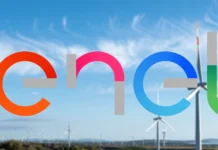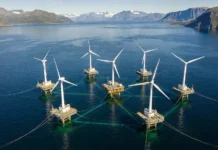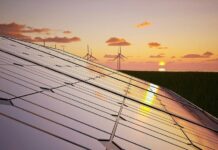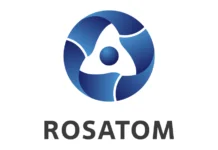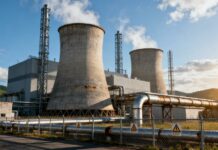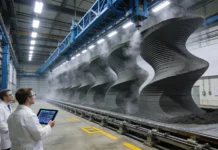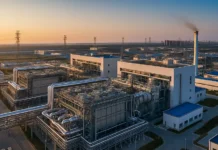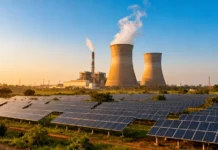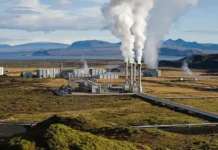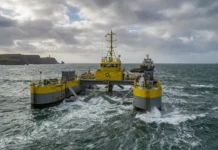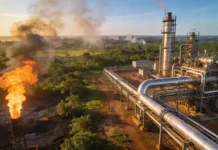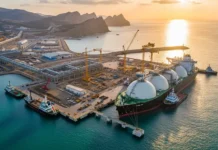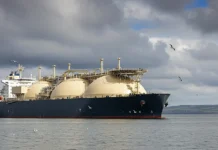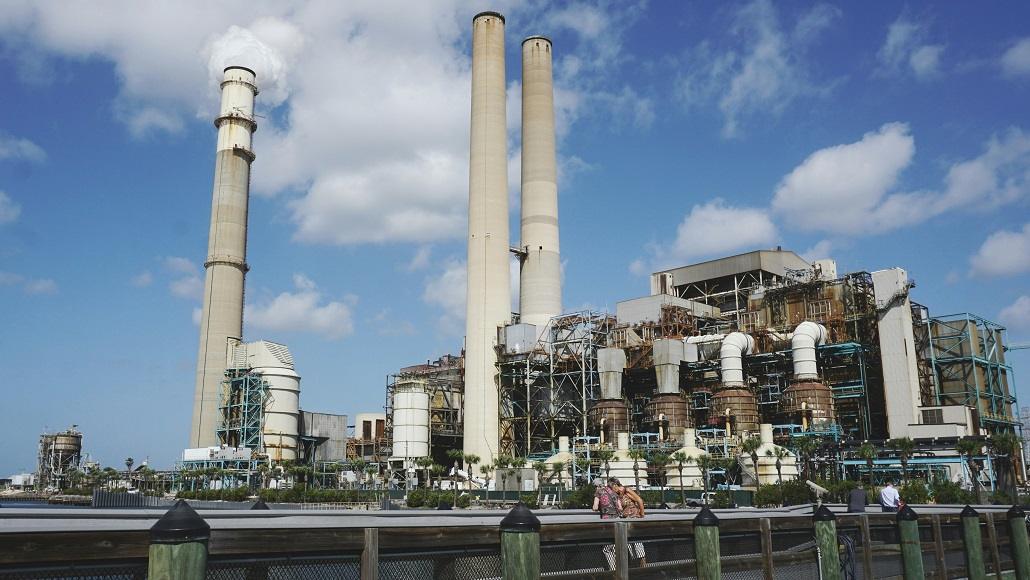In a recent move, Duke Energy looks forward to submitting an application to the Public Service Commission (PSC) in South Carolina so as to get approval to go ahead and build a 1.4 GW gas-fired combined cycle plant along with hydrogen capability in Anderson County. If it gets the approval, this project would come online by 2031 and thereby mark the first new generation proposal by the company in 10 years.
The utility went on to announce on June 9, 2025, that it looks forward to filing a construction application to the PSE later in 2025 so as to build the proposed plant on a 200-acre site adjacent to Highway 81 South near the True Temper Road.
As put up on the company page, the project is at present in its early stages of planning, engaging, and also permitting. The company page pointed out that public engagement happens to be an important part when it comes to the development process, as it will enable them to understand the local interests and priorities and even pinpoint opportunities to have a meaningful along with a positive presence within the community. The project is yet to undergo many more years of study as well as due diligence before going ahead and committing to move forward, said the page.
It further added that if they proceed along with the project and get all the necessary approvals as well as permissions, construction could very well begin by mid-2027, and operations should be targeted for as early as January 2031. The updates, along with milestones, are going to be shared all across the process.
Making use of major gas turbine collaboration
The Anderson facility of Duke Energy is going to roll out GE Vernova’s gas turbines and also its associated equipment that are manufactured at the company’s Greenville plant in South Carolina. The effort is going to make utmost use of a sweeping April 2025 collaboration that took place between the two firms that could very well secure almost 11 7HA units throughout the service territories of Duke, where there is a growing industrial as well as data center demand that is driving a very fast capacity expansion.
This partnership happens to be the latest across a range of original equipment manufacturers and utilities and power companies that are looking out to address a very intensifying push so as to lock in dispatchable generation. It is well to be noted that utilities are facing long lead times and also competitive bidding when it comes to production slots, and there are some deliveries that are stretching to 2029 or even beyond. The gas turbine issue has also prompted a return to practices that have not been seen since the early 2000s. This includes an upfront reservation fee and also multi-year turbine procurement planning.
Apparently, GE Vernon’s, which happened to book 22 GW when it comes to gas turbine orders in 2024, is going ahead and aggressively expanding its capacity in US manufacturing so as to meet the rising demand. In January 2025, the company went on to announce a $160 million investment within its South Carolina facility. This happens to be the largest investment since the company’s spinoff from GE, which took place in April last year. This kind of expansion is anticipated to support growth in turbine production, its testing capabilities, and also quality when it comes to hydrogen fuel, in addition to the speed of delivery.
Interestingly, the Greenville site, which has gone on to produce turbines since almost 1968, happens to be at the heart of the broad $600 million US manufacturing initiative by GE Veronica and is also a part of the $9 billion global capital and research and development plan all through 2028. The CEO of GE Vernova, Scott Strazik, on April 23, 2025, said that these upgrades are going to raise the capacity of global heavy-duty turbines by over 25%. This happens to be at 55 units per year and can even move to 70 or even 80 units by 2026.
New energy security act of South Carolina backing up
It is well to be noted that Duke Energy has not disclosed any terms of its agreement with GE Vernova or any kind of contingency plans if supply chain disruptions take place.
Although the company cites dependability as being one of the major drivers for the Anderson County plant, it also takes into account that its efforts are backed by future planning as well as recent policy development in the state of South Carolina, including the likes of the New Energy Security Act.
According to one of the law firms, the significant and broad-ranging energy legislation happens to be the result of the bipartisan efforts to address completely the unmatched economic growth along with corresponding generation requirements of the state. This 72-page law looks forward to achieving this objective by way of measures that include provisions affecting South Carolina ratemaking, facilitation when it comes to new generation, integrated resource planning, expanded policy support as far as advanced nuclear resources are concerned, initiatives based on energy efficiency, the rate of new economic development and the framework that supports it, and also the refinement of the present regulatory processes along with the state energy policy.
Interestingly, the New energy security act especially urges Duke Energy Carolinas, as well as Duke Energy Progress, to assess as well as roll out hydrogen-capable or conventional natural gas facilities as a part of the integrated resource plans by reflecting the push from the state for both urgent dependability as well as future fuel agility.
Apart from this, the law also directs Dominion Energy South Carolina and the state-owned Santee Cooper to jointly come up with new natural gas generation at or within the form of Canadys coal plant, which is a site that, once converted, can become one of the largest gas power stations in the country.
Notably, the law also encourages Duke to broaden energy storage, which includes pumped hydro at its Bad Creek facility, and also instructs Santee Cooper to go ahead and consider usage of domestic wood products as auxiliary fuel sources. And more widely, the law also stresses a very fast siting as well as permission for brownfield energy projects like the Anderson County proposal by Duke, thereby instructing all the state agencies to make sure that they prioritize the reviews and also approve energy infrastructure in the next decade, therefore recognizing these projects as critical as far as the welfare of the state is concerned. Apparently, the agencies will also be required to offer fast consideration as well as assistance with stringent deadlines for getting a permit decision to make sure that the new generation as well as grid upgrades can keep pace with the rising economic and population spurt across South Carolina.
In sync with the recent IRP
As per Duke Energy, the Anderson plant happens to be consistent with new term actions that are approved within the company’s Carolina’s resource plan in 2024. Apparently, in November 2024, the North Carolina Utilities Commission (NCUC) went on to issue an order by way of acceptance of a broad stakeholder settlement that endorsed Duke Energy’s revised forecast in terms of load, thereby affirming a more diverse resource blend and also approving the near-term development of three new combined cycle gas units along with four combustion turbine units by 2031. The addition – CC1 by way of CC3 and CT1 by way of CT4 are now getting actively executed. But the NCUC has also directed Duke Energy to continue with its refinement of long-term modeling, specifically due to the growing demand as well as technology transitions, and also submit completely updated integrated resource plans (IRP) by fall 2025.
As of now, Duke Energy is working to finalize the next IRP for the Carolinas, which happens to be due to the NCUC in September 2025 and to the public service commission of South Carolina by November 2025. Interestingly, the utility, which happens to serve more than 4.6 million retail customers within the region, has also spent the first half of 2025 holding a four-part public engagement series, which has been facilitated by the Great Plains Institute, so as to review the evolving grid requirements, long-term resource strategies, and also technology assumptions.
It is well to be noted that during the May 2022 IRP session, the utility went on to stress that its strategy is going to be essential so as to keep pace with the anticipated annual load growth of anywhere between 4% and 5% in the Carolinas, which would be driven by over 1000 MW of new commercial and industrial demand, which is now backed by signed or almost final customer commitments.
The company’s present efforts happen to detail out a framework so as to assess the capacity additions by 2040 and place a very sharp focus on the firm, as well as dispatchable resources that can meet the growing peak demand in this rapid influx of large industrial loads, advanced manufacturing facilities across both the states, and even the data centers.
It is worth noting that the May session happens to suggest that Duke Energy is modeling up to almost 5 new combined cycle gas plants and a minimum of four new combustion turbine units by 2040. Duke Energy’s modeling caps combined cycle additions at two projects every year along with cumulative limits, which trigger more infrastructure needs starting with the fourth unit.
Because of the persistent constraints within the transcontinental gas pipeline zone 5 pipeline corridor, Duke has gone on to confirm that any gas project that is beyond CC3 could need more fuel security either by way of firm interstate transportation (FT) or the development of interstate liquefied natural gas (LNG) storage. It is well to be noted that internal modelling notably happens to assume 14 days of full load burn coverage for every CC unit, and Duke Energy is presently assessing capital costs as well as seasonal dispatch scenarios in order to gauge if LNG can as well offer a more cost-effective hedge against renewable intermittency and fuel volatility.
Heavily focused on hydrogen and nuclear
The May meeting also went on to focus quite heavily when it comes to hydrogen capable gas turbines. The planners went on to discuss making utmost use of OEM forecasts like projections from GE Vernova of 100% hydrogen capacity when it comes to advanced class turbines by the end of this decade so as to inform fuel agility scenarios. It also suggests that IRP includes the sensitivity runs, thereby incorporating hydrogen price projections, tax credit trajectories, and also potential in terms of hydrogen blending timelines, specifically since federal support when it comes to Southeast hydrogen hub development happens to remain quite uncertain. Modeling coming out from the utility goes on to indicate that hydrogen readiness may as well be a crucial differentiator when it comes to new gas units, which may as well remain operational all along 2050 and even beyond.
It is well to be noted that while the Carolinas IRP is also going ahead and modeling significant additions in terms of solar, battery storage, and long-duration energy storage (LDES), Duke Energy has made very clear that firm capacity happens to remain a near-term priority for them. The company is at the same time advancing early site permission for new nuclear units, which include small modular reactors, and also discovering expanded pumped hydro, even if those resources are not likely to be online by 2030.
Notably, in its November 2024 order, for instance, the NCUC went on to approve $440 million when it comes to early development costs to advance the next wave of nuclear capacity by Duke Energy. Therefore, targeting 300 MW of advanced nuclear online by 2034 and another 600 MW by 2035. Apparently, the May 2025 IRB meeting also suggests that Duke happens to be preparing an early site permission application in 2025 for certain small, modular reactors (SMRs) at the Belews Creek site, North Carolina, and at the same time going ahead with the process of feasibility work in terms of rolling out AP1000 large light water reactors at another site in South Carolina.
It is worth noting that there are additional reactors at the Harris nuclear plant in North Carolina, which are also under study. The company is modelling technologies that include X-energy’s XE 100, GEH BWRX-300, and Natrium Design by TerraPower and also participating in the DOE-supported partnership efforts to speed up the licensing and decrease the expenditures by way of standardized design of the reactor.


